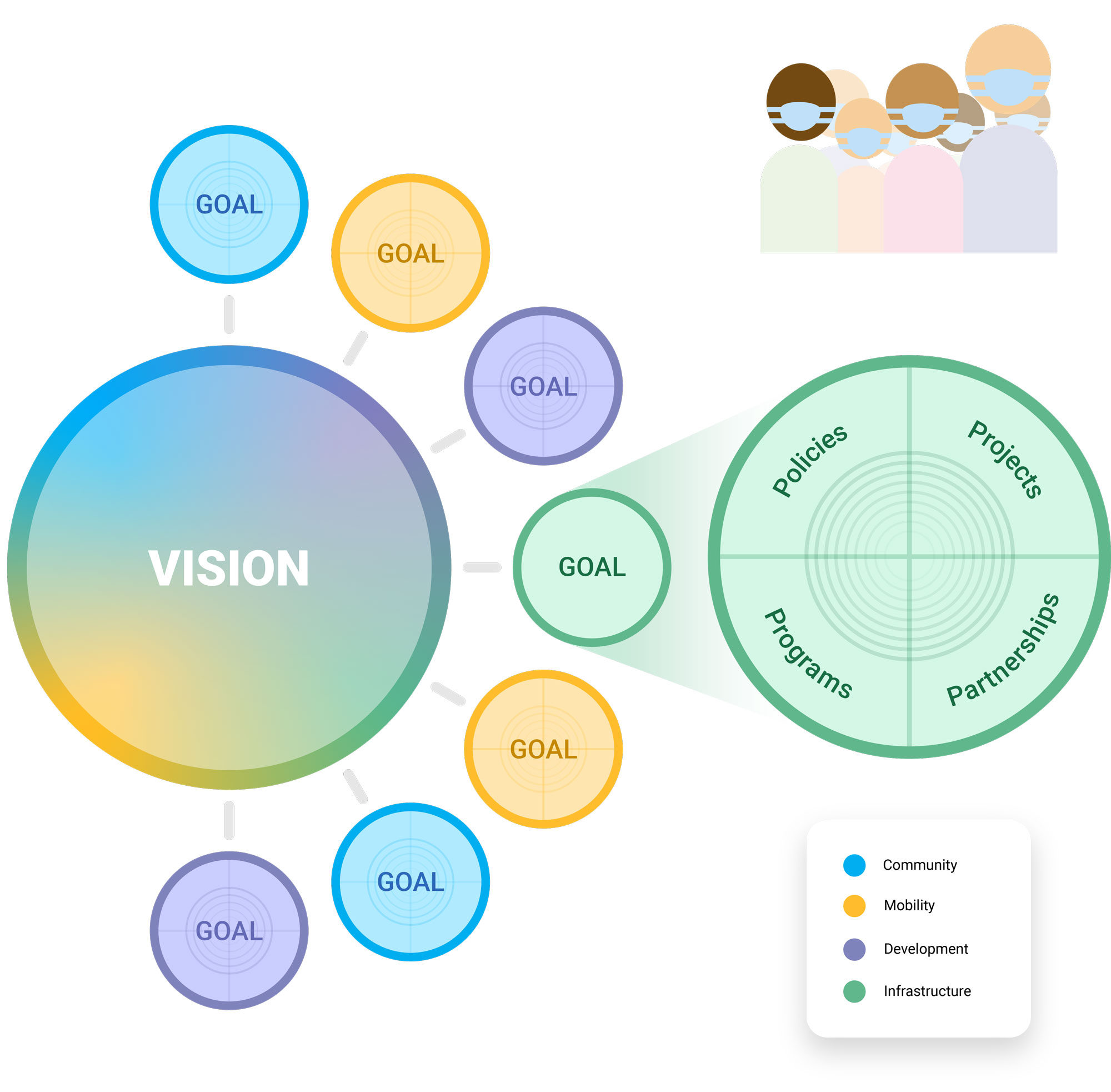Your input is essential to the planning process. Staff, the Steering Committee, and Action Teams are using your input to develop parts of the Oakland Plan.
Staff are working with the Steering Committee to create an initial draft Oakland Plan that will be released for public comment in early 2022. Please register for a free EngagePGH account and click the "Follow" button above to receive an email when the plan has been published.
Draft Strategies (Posted September 2021)
From fall 2020 through spring 2021, Action Teams met monthly to review input from the summer 2020 online open house which attracted 2,500 visitors who made 800 comments, reviewed data, and heard from local and national experts. Tours, workshops, and other events were held during this time to further inform the work of staff and the Action Teams. They generated the set of strategies which were released for public review in September 2021 on the project's EngagePGH page. Input was then sought from the broader Oakland community at eight in-person events through the fall with nearly 1,500 Oakland stakeholders in attendance. An online open house over the same period was visited by another 2,000 stakeholders who left nearly 500 comments. In October, Action Teams reviewed this input and made their final recommendations to the Steering Committee which is now working with staff to integrate public comments and strategies into the draft Oakland Plan which will be released in early 2022. A set of recommended changes to the Zoning Code to implement elements of the plan will be released at the same time.
Mapped Proposals
Top Priorities for New Development
Public input during the planning process made it clear that new development should address three priorities:
- Affordable housing that meets the needs of residents of all means, needs, and abilities.
- Increasing access to jobs, particularly for residents with lower levels of educational attainment.
- Improving the experience of living and working in Oakland by creating more open space along streets and as new parks.
The map below attempts to address these priorities and others in targeted ways. Click on the icons to learn more about the proposal for that area or line.
Additionally, there are three recommendations that could be applied across all of Oakland:
- Inclusionary Zoning requirements will be applied across all of Oakland for projects with 20 or more units and may be coupled with open space requirements.
- Off-street parking should increasingly managed through large strategically located district-scale structures that are shared by all users in the surrounding area.
- Require green buffers between new larger buildings and existing smaller scale structures to deal with compatibility issues
Mapped Proposals - Development

What do you think? (Development)
Unmapped Proposals
New Ideas Map
Draft Goals (Posted March 2021)
From mid-August to mid-October of 2020, the Oakland Plan online open house attracted ~2,500 visitors who made ~800 comments. Staff immediately set to work reviewing the comments and working with the Steering Committee to develop an initial set of goals. The Steering Committee reviewed the goals at their meetings in November and December 2020 and staff incorporated their changes to create the draft goals below.
These goals relate to the topics of the Development Action Team and chapter of the future plan. You can also review draft goals for the Community, Mobility, and Infrastructure topics.
What is a Goal Statement?
What is a Goal Statement?
- Long-term outcomes organizations will achieve by implementing the plan's projects and programs.
- Aspirational in nature and express the neighborhood's collective desires and values for each topic of the plan.
- Goals are drafted with the Steering Committee. Discussions in Action Teams will likely influence the final goal statements.
- In terms of numbers, in a plan, there is one vision statement, a few goals for each topic, and many policies, projects, programs, and partnerships.
Parts of a Plan
Parts of a Plan

How Goals and Policies Differ
How Goals and Policies Differ
- Where goals can have many elements that relate to a central theme, policies should have one clear focus.
- Policies set a preferred direction and describe what must be done to achieve the goals.
- They are specific enough that future projects can be assessed to determine if they would advance the values in the plan or run counter to them.
- Goals are drafted by the Steering Committee. Policies are drafted by the Action Teams.






